12 Beautiful Pink Trees to Add to Your Garden
If you want to add a pop of color to your garden, pink flowering trees are a great choice. These trees offer not only beauty but also an array of textures and shapes. From soft pastel hues to deeper, richer pinks, these trees can fit various garden styles. Planting them in your garden creates an inviting and peaceful atmosphere. With their gorgeous flowers, they truly elevate the garden’s charm.
This post may contain affiliate links, which helps keep this content free. Please read our disclosure for more info.
Cherry Blossom (Prunus)
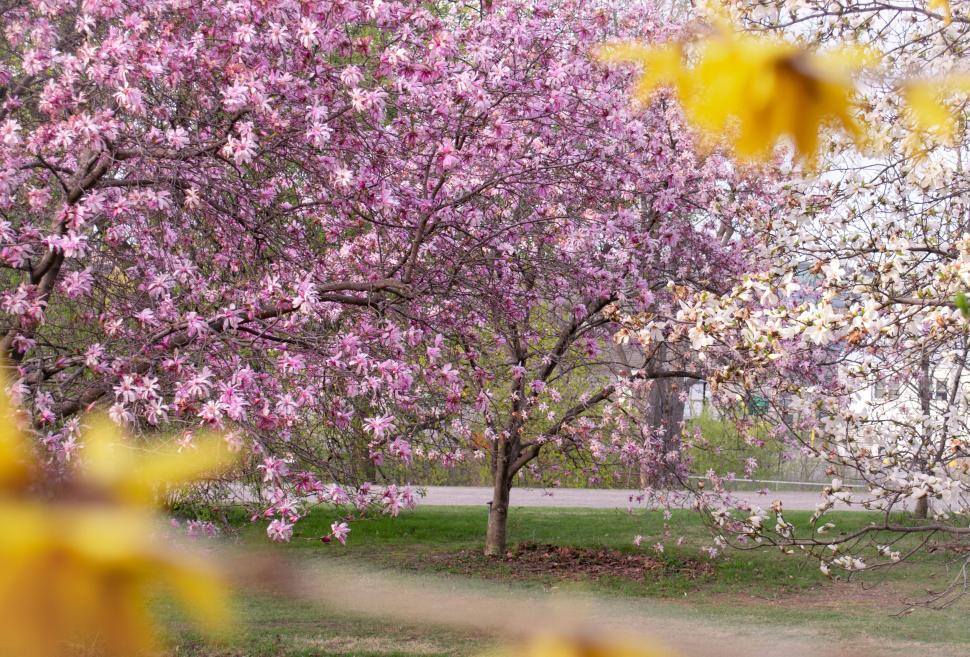
Cherry blossoms are known for their soft pink hues that emerge in spring. The pink color comes from the pigments in the flower petals that are affected by the temperature and sunlight. These trees typically reach full bloom in March or April, depending on the climate. To care for cherry blossoms, plant them in well-drained soil with full sun exposure and water them regularly during dry periods.
These trees prefer slightly acidic soil and benefit from annual pruning to remove dead branches. They also thrive in regions with mild winters and warm springs. Cherry blossoms are known for their short blooming period, but their beauty during full bloom is unmatched. They are a popular choice for gardens due to their stunning, delicate flowers.
Dogwood (Cornus florida)

Dogwood trees are famous for their bright pink to red flowers that bloom in early spring. They are usually in full bloom from April to May, bringing color to gardens during the early months. For best results, plant dogwoods in partially shaded areas and ensure the soil is moist and well-drained.
Dogwoods need regular watering, especially during dry spells, and benefit from mulching to retain moisture. These trees can grow in a variety of soil types but prefer slightly acidic conditions. Annual pruning to remove dead or damaged wood helps maintain their shape. Dogwoods are a perfect addition to any garden, providing both beauty and a sense of tranquility.
Pink Magnolia (Magnolia x soulangeana)
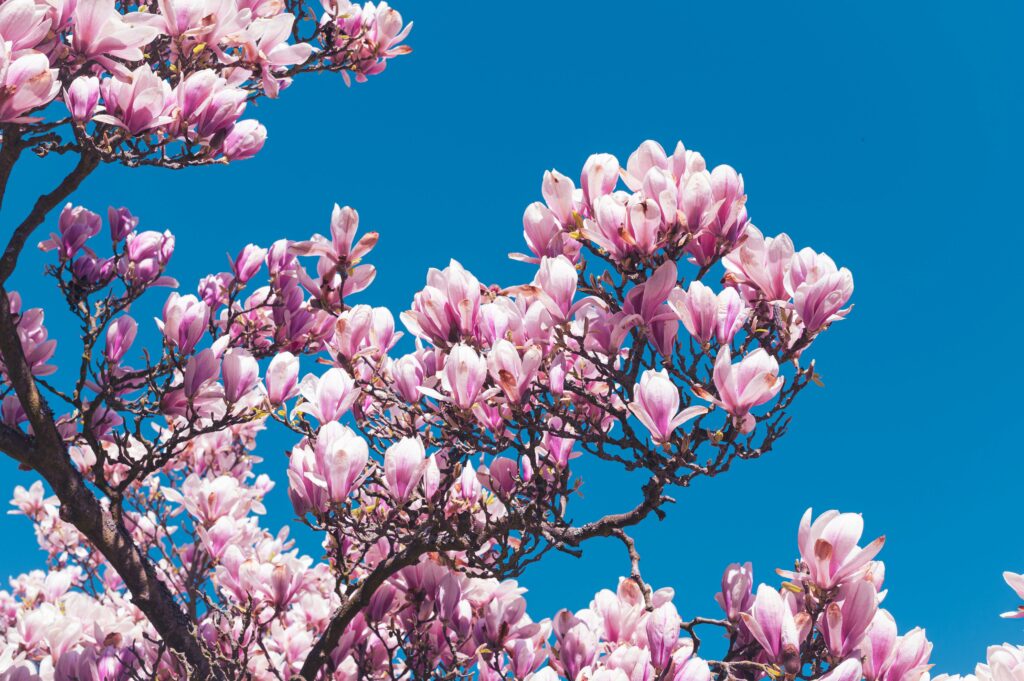
Pink magnolias display large, soft pink flowers that are a favorite for spring gardens. The pink color in magnolias comes from anthocyanin pigments in the flowers, with varying shades depending on the variety. These trees bloom in March or April, making them one of the first to signal the arrival of spring. To care for a pink magnolia, plant it in full sun or partial shade, ensuring the soil is rich and well-drained.
Magnolias require regular watering but should not be overwatered as they do not tolerate soggy conditions. Pruning is best done after flowering to maintain shape and health. These trees can be somewhat sensitive to cold weather, so choose a location that provides some protection from frost. Pink magnolias are a stunning addition to any garden, with their large, fragrant flowers.
Japanese Lilac Tree (Syringa reticulata)
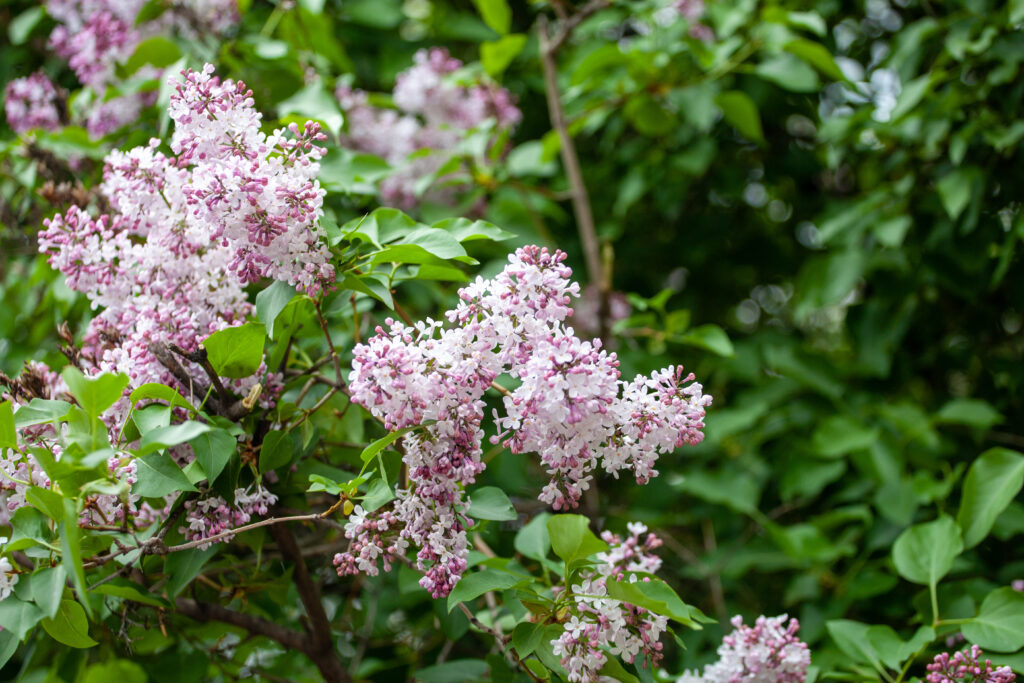
The Japanese lilac tree produces clusters of soft pink to purple flowers in mid to late spring. The pink color is caused by the flower’s anthocyanin pigments, which are more vibrant in cooler weather. Full bloom typically occurs in May or June, adding lovely color to gardens. These trees thrive in full sun and well-drained, slightly acidic soil for best flowering results.
Regular watering is important, especially during dry weather, but avoid overwatering to prevent root rot. Pruning should be done after flowering to maintain shape and remove deadwood. Japanese lilac trees are relatively low-maintenance and resistant to pests. They can be an excellent choice for smaller gardens, offering both beauty and a lovely fragrance.
Eastern Redbud (Cercis canadensis)
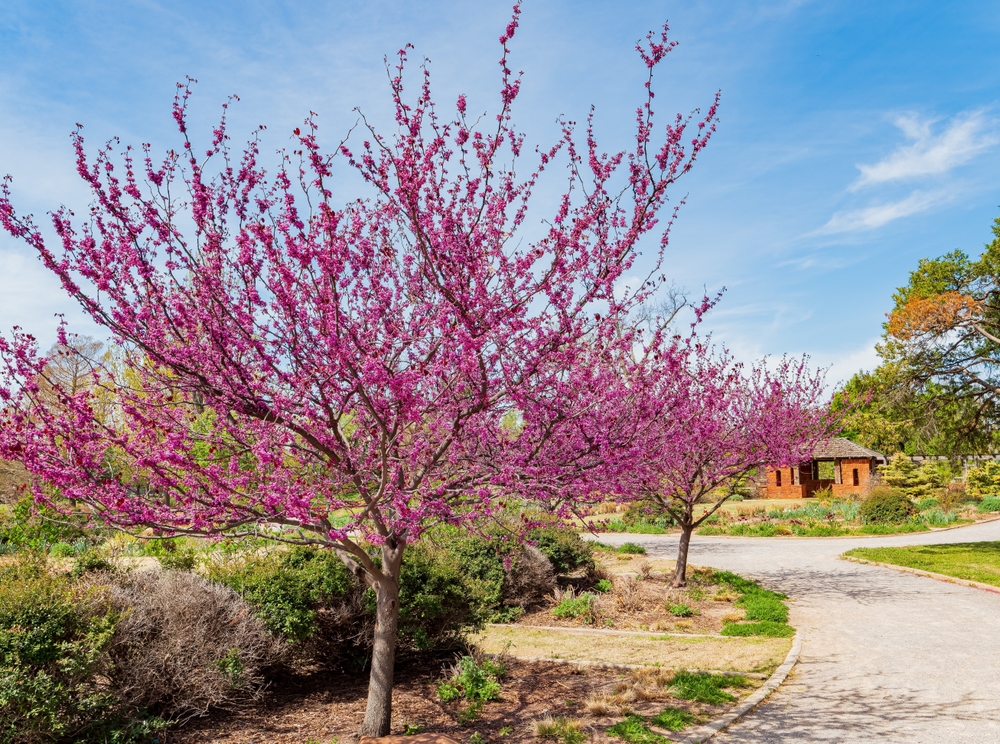
The Eastern Redbud is a small tree that produces clusters of pink flowers in early spring. Its vibrant pink flowers come from anthocyanin pigments that develop in the petals when temperatures begin to warm. These trees bloom in March or April, often before the leaves appear. To care for a redbud, plant it in a location with full sun or light shade and ensure the soil is moist but well-drained.
Redbuds are adaptable to a variety of soil types but prefer slightly acidic conditions. Regular watering and occasional deep watering during dry periods will keep them healthy. Pruning can be done after flowering to maintain their shape and remove any dead branches. With their beautiful pink flowers, redbuds are perfect for adding color to early spring gardens.
Pink Silk Tree (Albizia julibrissin)

The pink silk tree features bright pink, fluffy flowers that bloom in summer. The flower color is due to the presence of anthocyanins in the petals, which create a striking contrast against the green foliage. Pink silk trees typically bloom in June or July, making them perfect for adding summer color to the garden. For care, plant them in full sun and well-drained soil, ensuring they get plenty of light for optimal blooming.
Silk trees are drought-tolerant once established but benefit from regular watering during dry spells. They do well in a variety of soil types but prefer slightly acidic to neutral pH levels. Pruning should be done in the winter to shape the tree and remove any dead or diseased branches. These trees are low-maintenance and can add a tropical feel to any garden with their unique flowers.
Pink Trumpet Tree (Tabebuia impetiginosa)
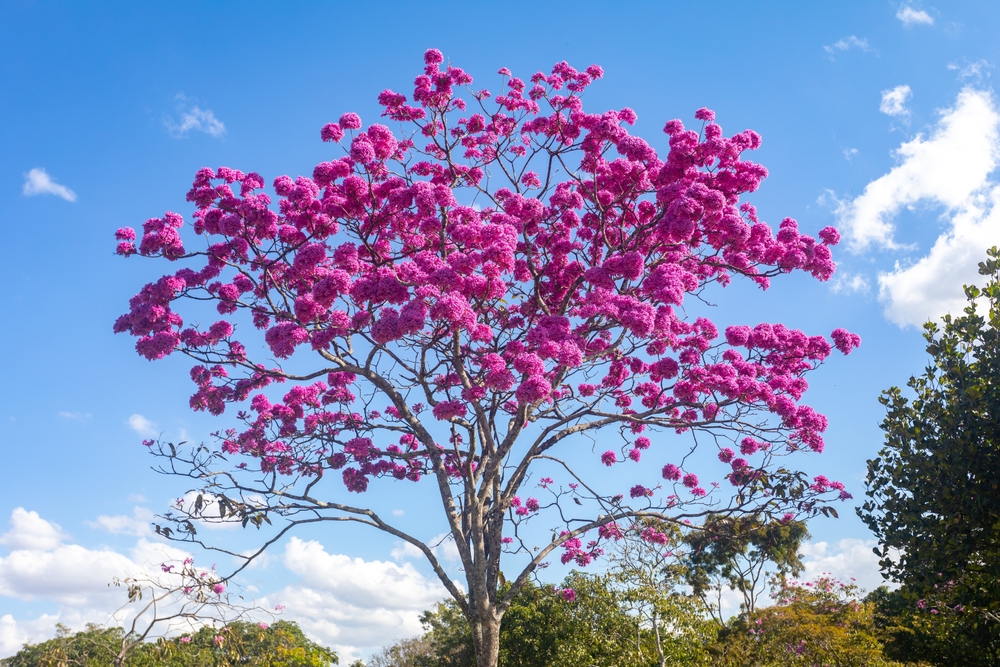
Pink trumpet trees are known for their large, bell-shaped pink flowers that bloom in late winter or early spring. The pink hue is due to the natural pigments in the flowers, which are more vibrant in full sun. They typically bloom from February to April, providing bright color before many other trees begin to flower. To care for a pink trumpet tree, plant it in full sun with well-drained soil and water it regularly during dry periods.
These trees prefer warm climates and are best suited for tropical and subtropical regions. They are relatively low-maintenance but may require occasional pruning to maintain their shape. Pink trumpet trees are great for adding a tropical feel to gardens and landscapes. Their stunning pink flowers make them a popular choice for brightening up any outdoor space.
Crape Myrtle (Lagerstroemia indica)
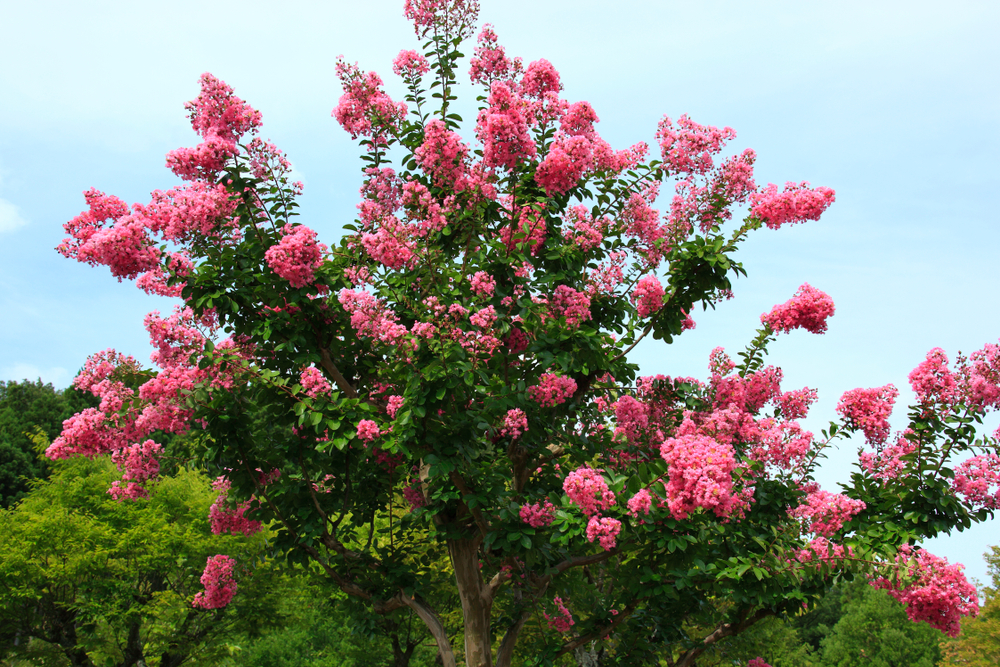
Crape myrtles are popular flowering trees that produce clusters of pink flowers in late summer. The pink color comes from anthocyanin pigments in the petals, which are intensified by the heat. These trees typically bloom in July through August, providing a lovely summer display. To care for crape myrtles, plant them in full sun with well-drained, slightly acidic soil.
They are heat-tolerant and drought-resistant once established, making them perfect for warmer climates. Regular watering during the establishment period is crucial, but crape myrtles can handle dry conditions once mature. Pruning should be done in late winter or early spring before new growth begins. Their vibrant flowers make them a great choice for adding color to gardens throughout the summer.
Red Horse Chestnut (Aesculus x carnea)
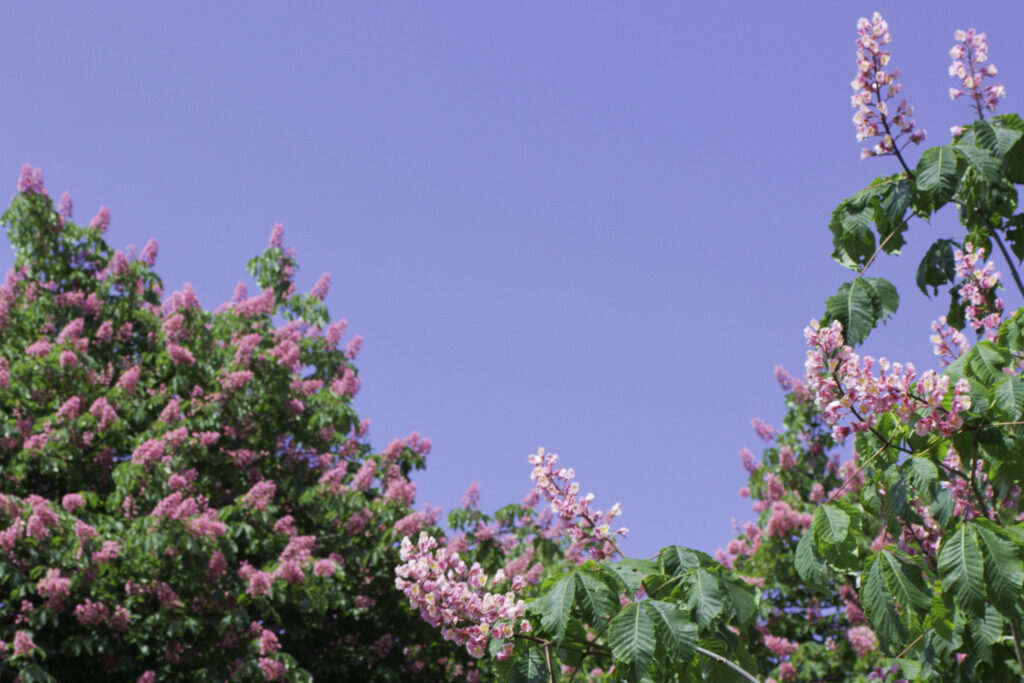
The Red Horse Chestnut produces clusters of pink flowers that bloom in late spring. The pink color is a result of natural pigments in the petals, which vary from light pink to deep rose shades. This tree blooms in May, just after the leaves start to unfurl. To care for a Red Horse Chestnut, plant it in well-drained soil with full sun or partial shade, ensuring it receives consistent moisture.
These trees are adaptable to a variety of soil types, including slightly acidic to neutral soils. They require regular watering, especially during dry periods, and benefit from occasional deep watering. Pruning should be done after flowering to maintain a healthy shape and remove any dead wood. Red Horse Chestnuts add a vibrant splash of color to spring gardens with their beautiful pink blooms.
Pink Frangipani (Plumeria rubra)
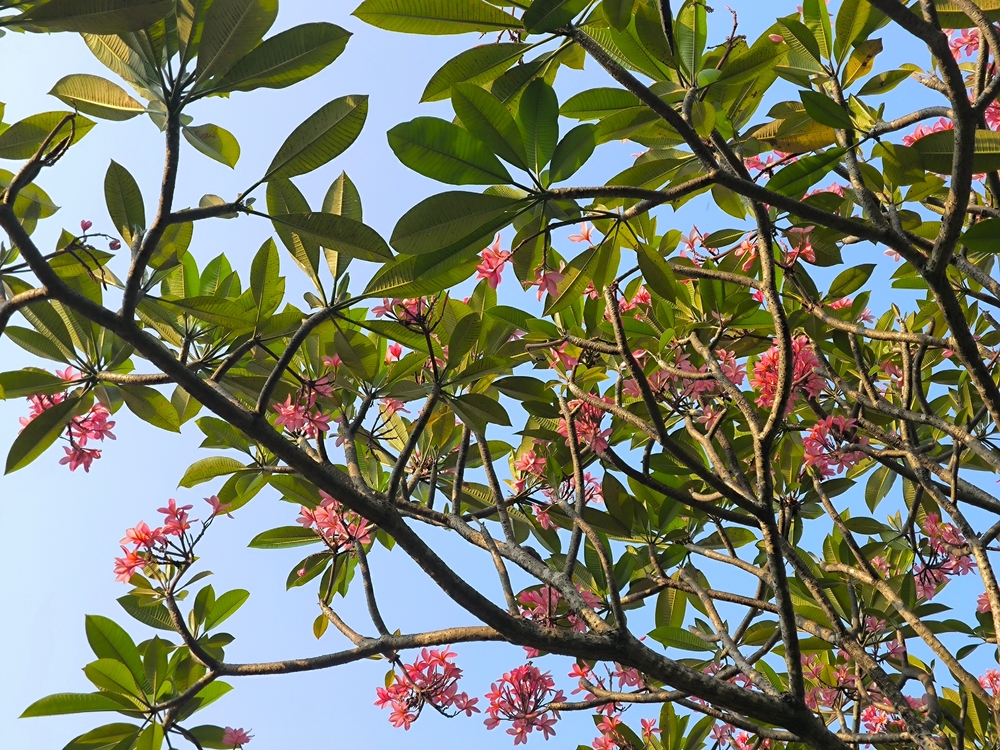
Pink frangipani trees are known for their fragrant pink flowers that bloom in summer. The vibrant pink color is produced by the flower’s natural pigments, which thrive in warm, sunny environments. These trees typically bloom from June to September, adding an exotic touch to gardens. To care for frangipanis, plant them in full sun with well-drained, sandy soil, and ensure regular watering during dry spells.
Frangipanis are drought-tolerant once established but should be watered regularly when young. They are best suited for tropical and subtropical climates. Pruning is best done in winter when the tree is dormant, allowing new growth to develop in the spring. These trees provide not only beautiful flowers but also a lovely fragrance that fills the air.
Pink Katsura Tree (Cercidiphyllum japonicum)
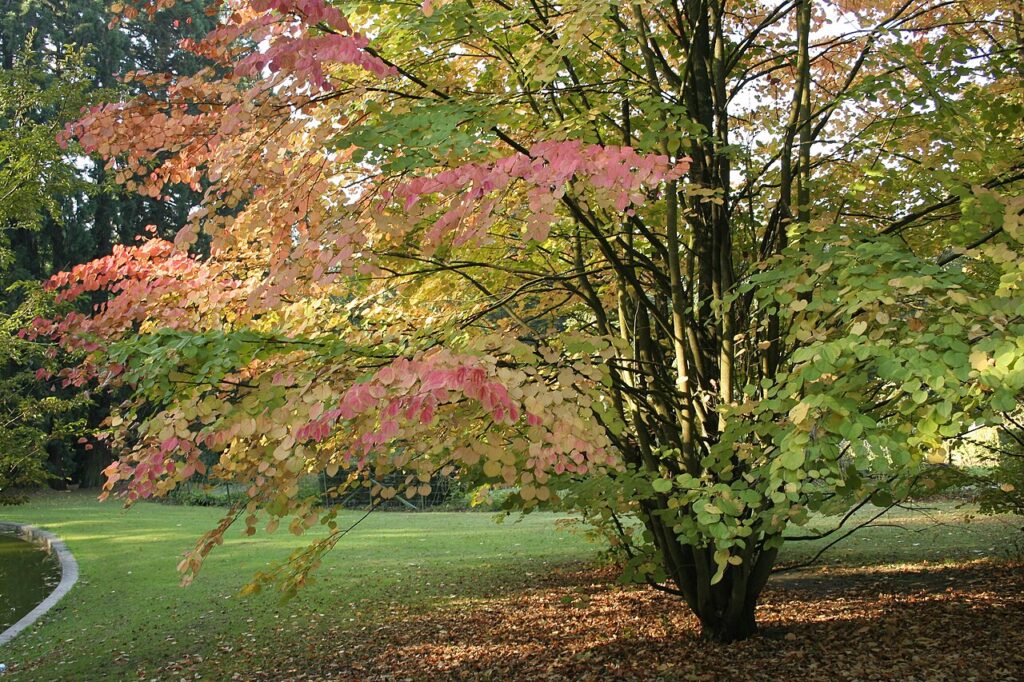
The Pink Katsura tree is a unique species that produces pink to red flowers in spring before the leaves emerge. The pink color comes from the flower’s natural pigments, which are especially visible when the tree is young. These trees bloom in April, providing a colorful display before the foliage takes over. To care for the Pink Katsura tree, plant it in full sun or partial shade with moist, well-drained soil.
This tree thrives in cool, temperate climates and prefers a slightly acidic soil pH. Regular watering is important during the early stages of growth, but these trees are relatively low-maintenance once established. They benefit from occasional pruning to remove dead branches and maintain their shape. The Pink Katsura adds a unique beauty to spring gardens with its early blooms.
Pink Redbud (Cercis canadensis Pink Blossom)

The Pink Redbud is a smaller tree with bright pink flowers that bloom in early spring. The pink color is the result of the natural pigments in the flowers, which are more vibrant in full sun. These trees reach full bloom in March, adding a lovely touch of color to gardens before the leaves appear. To care for a Pink Redbud, plant it in full sun or partial shade with moist, well-drained soil.
Pink Redbuds prefer slightly acidic soil and benefit from regular watering, especially during dry spells. They are a great addition to any garden, offering a beautiful display of early spring color. Pruning should be done after flowering to remove any dead or damaged wood. With their bright pink flowers, Pink Redbuds are perfect for gardens that need a pop of color in the spring.
Pink flowering trees are a wonderful addition to any garden, offering both charm and practicality. They provide a burst of color, attract wildlife, and create a peaceful atmosphere
This article originally appeared on Avocadu.
